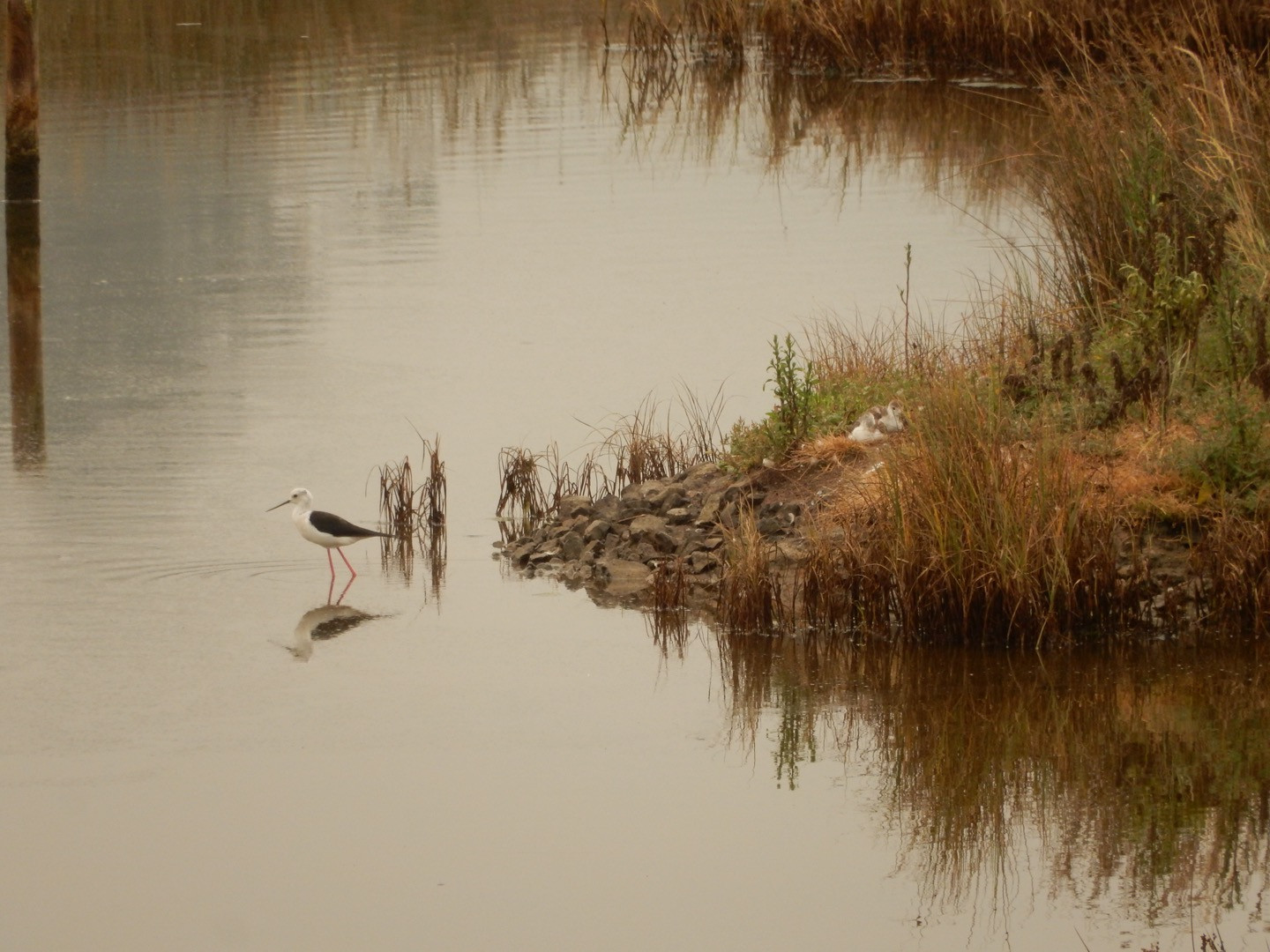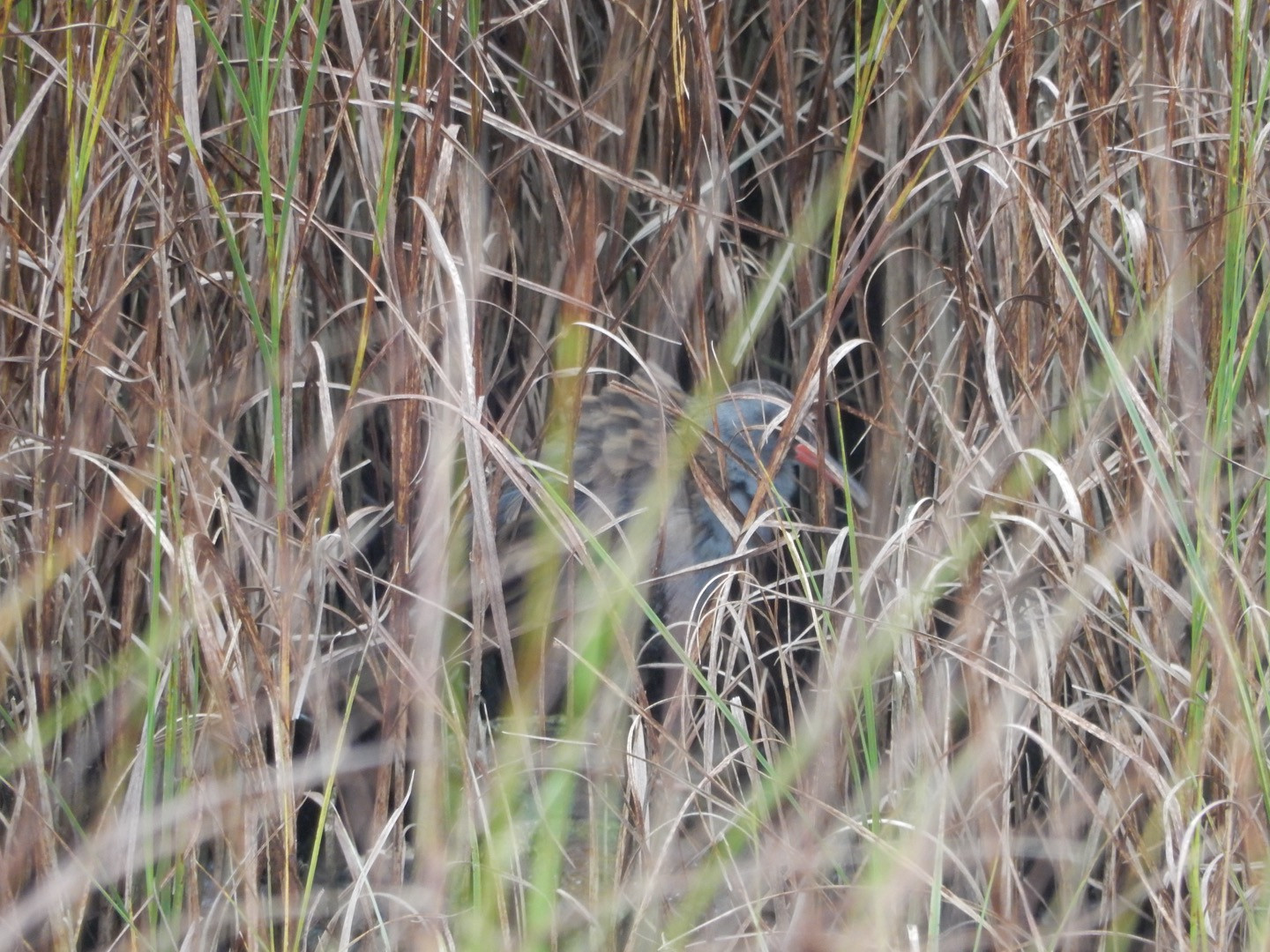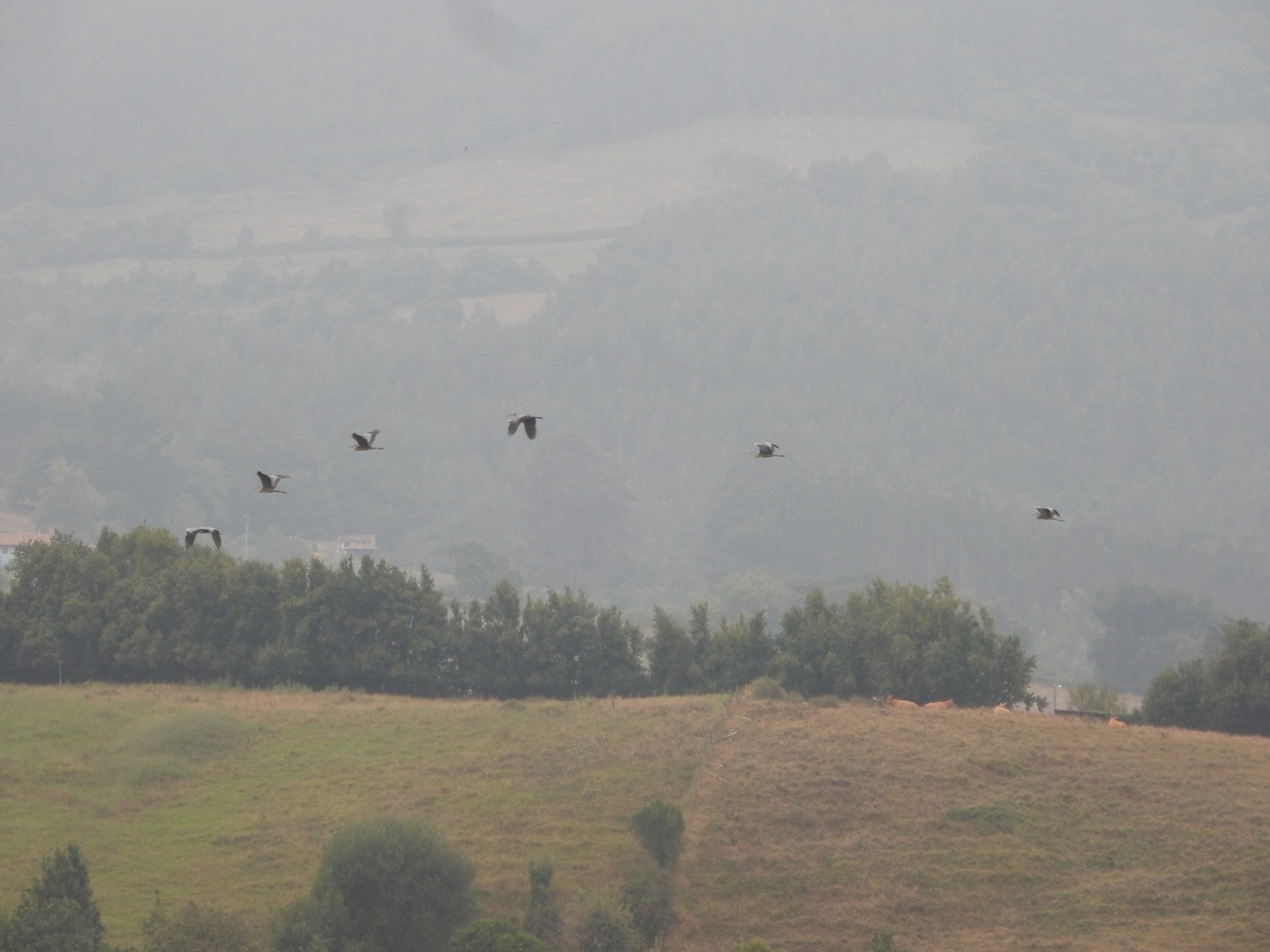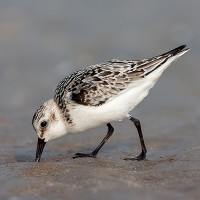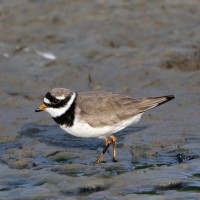Description
The estuary of Villaviciosa is a very well preserved river valley flooded by sea waters. Because of its strategic location, the estuary is a place of vital importance for thousands of waterbirds during migration and wintering. Almost 150 bird species stand out for their importance. The group best represented is that of the waders. These are wading birds with long legs like Λευκοσκαλίδρα, Δρεπανοσκαλίδρα, Σταχτιά Νανοσκαλίδρα, (Ευρωπαϊκή) Αβοκέτα (Ευρωπαϊκός) Στρειδοφάγος, Αργυροπούλι, Χαλικοκυλιστής, Κουφομπεκάτσινο, (Κοινό) Μπεκατσίνι, Ακτίτης, Δασότρυγγας, Λασποσκαλίδρα and Λευκοσκαλίδρα. In the 'porreos', which are lands gained from the marsh, where there are abundant ponds and drainage channels, abound ducks and plovers of various species. On the beaches of Rodiles and Misiego, you can see terns, gulls and other seabirds that arrive on the coast during the winter and penetrate the estuary through the Puntal Canal.
_________________________
Espagnol: La Reserva Natural de Villaviciosa es un Humedal RAMSAR de especial importancia para la invernada de aves y para la reproducción (RN2000 & IBA). La ría de Villaviciosa, es uno de los estuarios, o valle fluvial inundado por aguas marinas, mejor conservados de la costa asturiana, que en el año 1995, fue incluido en la Red Regional de Espacios Naturales Protegidos del Principado de Asturias bajo la figura de Reserva Natural Parcial. La constituyen 8 Km de largo, desde el Puente Güetes, en la capital del concejo, Villaviciosa, hasta su desembocadura en el mar Cantábrico, al Oeste de la playa de Rodiles. En puntos cercanos a su desembocadura, puede llegar a alcanzar hasta los 1000 m de anchura. Rodiles, es una de las playas más extensas y mejores conservadas del Principado, que llega a tener 350.000 m2 de superficie de arenal en bajamar. Por su estratégica ubicación, la Ría es un lugar de vital importancia para el descanso de miles de aves acuáticas durante la migración e invernada. Entre las especies faunísticas, destacan por su importancia las aves migratorias e invernantes de las que pueden observarse casi 150 especies. El grupo mejor representado es el de los limícolas, todas ellas aves zancudas de largas patas patas. Zarapitos, agachadizas, corregimos, acríbeles, agujas, etc., que se nutren de los numerosos organismos animales invertebrados que viven en las llanuras del fango que quedan al descubierto en los bajamares. El vuelvepiedras, el ostrero, el andarríos, son aves limícolas de sustratos rocosos, más frecuentes en la desembocadura de la ría. En los 'porreos', que son terrenos ganados a la marisma, donde hay abundantes charcas y canales de drenaje, abundan las anátidas de varias especies, las avefrías y chorlitos, junto con una gran variedad de pequeñas aves cañaverales.
Details
Access
By bus to Villaviciosa and there on foot to the Cierrón observatory and path. To the other observatories and points by car.
_________________________
Espagnol: En autobús hasta Villaviciosa y allí a pie al observatorio del Cierrón y senda. A los demás observatorios y puntos en coche.
Terrain and Habitat
Scattered trees and bushes , Wetland , Grassland , Moors/heathland , River , Sea , Beach , Dunes , City/village , Agriculture , Reedbeds , ValleyConditions
Open landscape , FlatCircular trail
NoIs a telescope useful?
YesGood birding season
Winter , All year round , SpringBest time to visit
WinterRoute
Unpaved road , Wide pathDifficulty walking trail
EasyAccessible by
Foot , CarBirdwatching hide / platform
YesExtra info
There is an interpretation center (see the map), but the place that should not be missed is the Cierrón Observatory. If they go to the center they may be able to request a boat trip with a boatman who has permission and it can be cheap. There are different days of celebration in which the local SEO / BirdLife Asturias group is and organizes observation points and activities. Observation points depend on the tide. It is a very important wetland because it preserves different habitats and protected flora, there are also different points of geological interest. And the village is small and nice. On the beach you can see part of the recovering dunes and important geological outcrops.
_________________________
Espagnol: Hay un centro de interpretación, pero el sitio que no hay que dejar de ir es el observatorio del Cierrón. Si van al puntal es posible que puedan solicitar un paseo en barca con un barquero que tiene permiso y puede ser barato. Hay distintos días de celebración en los que está el grupo local de SEO/BirdLife Asturias y organiza puntos de observación y actividades. Los puntos de observación dependen de la marea. Es un Humedal muy importante pues conserva distintos hábitats y flora protegida, también hay distintos puntos de interés geológico. Y la villa es pequeña y agradable. En la playa se puede ver parte de las dunas en recuperación y afloramientos geológicos importantes.
